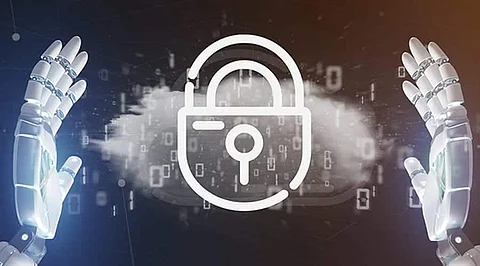
- Insights
- Cryptocurrencies
- Stocks
- White Papers
- Industry
- Geography
- Insights
- Cryptocurrencies
- Stocks
- White Papers
- Industry
- Geography


In the 21st century, we're surrounded by activities that require cloud computing. Don't believe me? Your social media accounts like Facebook and Instagram use the cloud. What happens when you upload a photo? It is stored in the cloud. Love binge-watching Netflix in your free time? The only way you are being able to access your favourite shows and movies is because of the cloud. In short, let's just say mostly everything on the internet is running on cloud computing, and it shows no signs of slowing down. According to Rightscale's 2018 report, 96% of companies are using the cloud to conduct some of their operations.
What's the issue, you ask? Well, just like everything, this too comes with perils.
Cloud computing is vulnerable to breaches. Many IT professionals highlight that despite the growth of cloud computing, it's the most vulnerable area within the business. To tackle this problem, many companies have started to rely on artificial intelligence and machine learning to strengthen their cloud security. Additionally, they are increasing their cloud security budgets.
Artificial Intelligence is a program that can think by itself and solve problems, just like us humans. Machine learning is a part of AI that uses algorithms to learn from several units of data. The more data it has to analyze, the more it learns based on the patterns to give useful insights.
While it's not 100% bulletproof, AI and machine learning can be used to detect threats in real-time.
If you are a business using cloud computing, here's how these technologies can benefit your security strategy.
Big Data Processing
If you employ a team to sift through several GBs of data that cybersecurity systems produce, it's going to be impossible to deal with the massive data. While we can't do it, machine learning technologies can churn that data to detect potential threats. The more it processes, the more it understands patterns for better detection.
Threat Prediction
Artificial Intelligence uses an advanced data-driven approach that can detect and alert vulnerabilities that are present at the time or might happen soon. This is calculated by observing the data coming in and out of protected endpoints. With sufficient data, this approach can detect threats based on known behavior and predictive analysis.
Threat Detection And Blocking
What will happen if there is a breach and the systems team is not present in the office to take immediate action? AI and machine learning will do it on their own. When these systems find glitches in the data patterns, they will alert a human or take immediate action by shutting a system under threat down. This gives businesses warnings about potential threats days in advance or detects and blocks a dangerous code within hours.
Self-handling Security Analysis
One of the advantages of employing an automated technology like AI and machine learning for cloud security is that it will handle first-level security threats on its own, giving you more time to focus on other complex issues. This means companies can rely less on manpower and use their potential elsewhere by delegating first-level analysis to bots.
While it might not solve every problem, AI will sift through massive amounts of data and analyze patterns to detect an anomaly. While AI and machine learning might respond to first-level threats on their own, that day is still far when it will take care of the breach on its own. Nevertheless, it will help you scatter through bundles of incoming data and warn you of any potential breach, keeping you one step ahead.
